Keely Garfield Dance premieres Wow at St. Mark’s Church (a Danspace Project presentation).
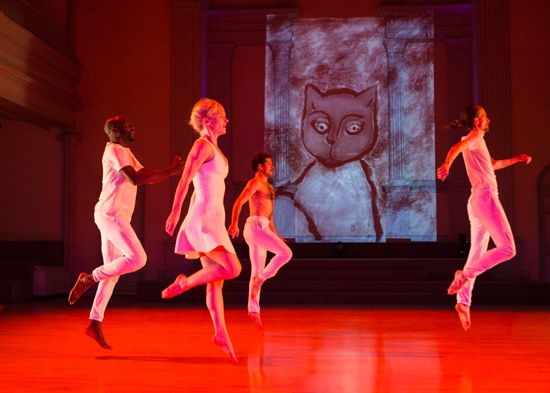
(L to R): Paul Hamilton, Leslie Kraus, Brandin Steffensen, and Jordan Morley in Keely Garfield’s Wow. Photo: Yi-Chun Wu
I’m pretty sure that Keely Garfield does what most of us do: mop the floor, rustle up some dinner, move close to the other person in the bed, tell the kids what they can do and what they shouldn’t do. Garfield, however, is a yoga teacher and a Donna Karan/Urban Zen Integrative Therapist (working in oncology and hospice), as well as a choreographer-performer whose work I often fall in love with. Why? Because as an artist, she’s so reckless, so elegantly wild that you feel as if she’s brought you into a fabulously strange secret room and is telling you stories that keep merging and overlapping and fighting one another and suddenly just ending only not.
Her new Wow, shown at Danspace St. Mark’s, contains, I suspect, dislocated images from her childhood—gaudy, puzzling, fearsome, greedy. In the 1940s, modern dance pioneer Charles Weidman made two lighthearted pieces about his parents: On My Mother’s Side and And Daddy was a Fireman. Some years back, Garfield made a piece called My Mother Was a Four-Alarm Fire. I consider that telling. Wow is also full of dancing—richly textured, something sleek, sometimes unrefined–and a variety of movement games and strategies. Political discomforts crop up, often in the form of familiar public statements delivered by Garfield—for instance, “If you see something, say something” and the more startling warning you hear in subway stations, advising you to cough or sneeze into a handkerchief or, lacking one, “into the bend of your arm” (ever try that in your best winter coat?).
The dancers wear many different costumes in Wow. The overall effect suggests that they may have ransacked one of New York’s costume shops and/or fabric stores, as well as their own closets and family attics. Garfield begins, for example, wearing a black-and-white dress and a white jacket with black sleeves and a bushy, orange, fake-fur collar; a little later, she’s in a trim, sparkling, silvery sort-of-unitard and her partner in a duet (Paul Hamilton) wears an equally glittering bikini. Jordan Morley starts out wearing a black satin coverall and at some point appears in a shiny gold unitard. For one scene, Garfield is costumed in a roug-cut version of a medieval gown that could have been made out of a white sheet. All the performers nonchalantly make their costume changes on the sidelines, in full view of the audience.
Clothing also makes a brief point about dysfunctional relationships. Garfield and Brandin Steffensen sit on chairs, facing each other, but some distance apart. Locking eyes, they begin removing their garments and folding them; then they put them back on. Bit by bit, they hitch their chairs forward until they’re close enough to reach over and pull each other’s shirts off; then they re-dress. I should mention the painting by Vivian Ra of a blue cat with green eyes that hangs watchfully behind the performers; later it is replaced by an orange cat against a lavender background, and finally by a brownish version of itself in a drab surround.
Wow begins with the performers standing in a circle of light, vocalizing and hitting sticks together: Garfield, Steffensen, Hamilton, Morley, Leslie Kraus, and composer-singer-pianist Matthew Brookshire. Brookshire’s imaginative score was inspired by the lyrics of some of Kate Bush’s songs, and this opening sequence channels Bush’s “Lily,” with its reference to “the circle of fire” and the archangels Michael and Uriel. Later, after Brookshire has moved to the piano, we can make out, among the various songs, text from Bush’s well-known “Wuthering Heights,” with Cathy’s ghost crying to be let in. Sometimes the dancers join in, once affecting a faux-British accent (Garfield was born in England).
I can provide only a sampling of all that goes on in Garfield’s dizzying and provocative/evocative piece (sensitively lit by Kathy Kaufmann). Once, the dancers gather the six available, different-sized chairs and play, with great seriousness, a game that you think will be Musical Chairs, only it’s skewed in terms of timing and who sits when. Finally, there’s one chair left, and Garfield is sitting in it, but Steffensen continues to run circles around it. She removes the chair and walks away; he keeps going—around and around and around and around. . . .
Now envision Steffensen, Morley, and Garfield (in her white gown) singing, with little red books open and upside down on their heads. After that rather absurd sight, a frightening one. The two men kneel, holding fast to Garfield, pinioning her between them. Like a princess in a tower, she struggles fruitlessly, twisting and reaching toward the audience for what seems like a painfully long time.
Sometime the actions resonate with the text. Garfield and Steffesen are running in place when we hear “running up that hill.” And sometime the dancing just stands for life and its journeys. Kraus (surprisingly, no longer a redhead but a platinum blonde) and the three men repeat an interesting pattern, while subtly moving further away from us, until a couple of them have to take their movements up the steps to the altar platform, and then making their quartet travel forward again.
Throughout, these gifted artists perform with a grave demeanor, no matter how strange their behavior. Garfield, as usual, looks worried most of the time, as if she’s not sure she’s solving the problem she’s meant to solve. In her program note, she mentions that in Wow, she hoped to make something that was “sincere without a hint of irony or cleverness.” Puns and jokes about serious matters, she thinks, divert us from taking action in the world and in our lives. Occasionally we spectators at Wow do laugh, but more often, I think, we’re touched by the performers’ persistence and endurance. In a brief online interview with Dance Enthusiast, Garfield explained the dual meaning of her title—opening her eyes wide in astonished delight as she delivers one “WOW!” Then, with an aside mutter and a shake of her head, confronting startlingly bad news about which one can, for the moment, do nothing.
I watch this work, saying one or the other version of “wow” silently and at appropriate moments. I won’t even try to tell you or myself what it’s “about,” but it will whirl around in my head (and maybe in my dreams) for a long time.

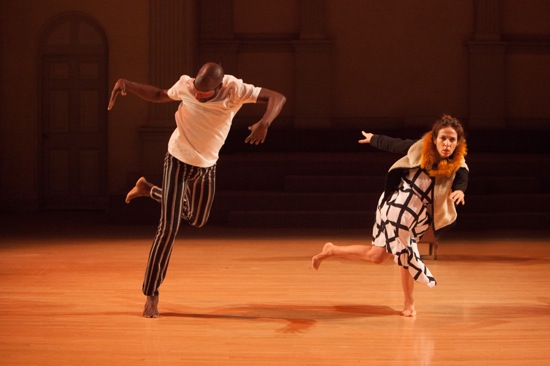
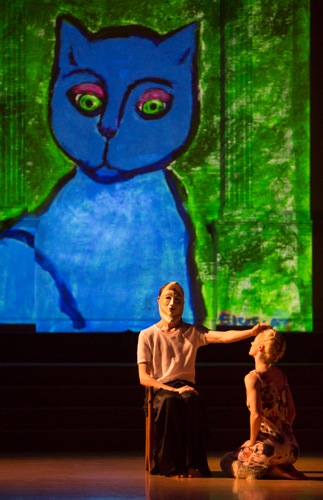
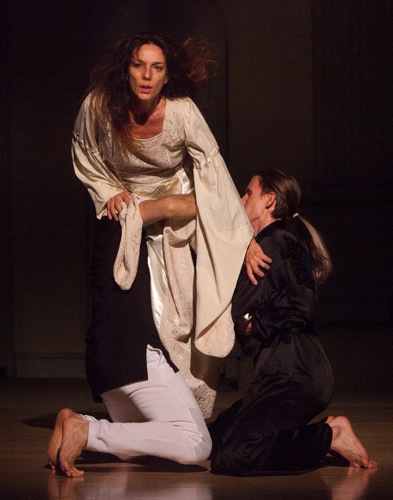
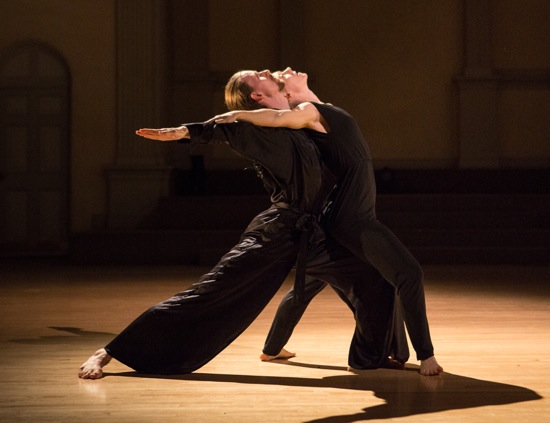
(coughing or sneezing) “into the bend of your arm,”
This is apparently now called a vampire cough. Bela Lugosi was even more of a trendsetting than I had thought.
Thank you for this addition to my knowledge of contemporary language usage. I had never pictured vampires coughing, assuming them to be so well fortified with blood that they never grew ill.